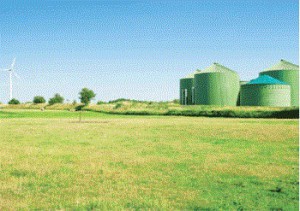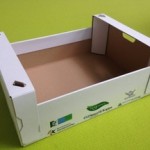The paper and pulp industry calls it MIMO: Multiple Inputs, Multiple Outputs. In other words: biorefinery of various resources in order to produce multiple end products. Of which the paper and pulp sector would be just one of the clients, among which also food and feed industries, chemical industry and the energy sector. Says Michiel Adriaanse, a researcher at the Dutch Knowledge Centre for Paper and Pulp KCPK.

‘The Dutch paper and pulp industries have been looking for decades for an enlargement of their feedstock base. First as an alternative to virgin wood fibre (20% of total inputs, 80% consisting of recycled paper). Many resources fail in actual practice, because industry often requires very large volumes. But sometimes they are successful. Two recent new resources are tomato stems (a major producer seeing a marketing opportunity in processing these to tomato trays), and grass.’
Reduce energy consumption by half
The paper sector is a traditional industrial sector, that sometimes struggles with innovation. Volumes are very large, and in many respects the sector would seem to be in the last phase of the innovation cycle, in which volumes and prices competition are dominant. Many companies hardly survive, some not at all. And yet, the Dutch paper and pulp sector embarked ten years ago on an ‘Energy transition in the paper chain’, with the goal to reduce substantially energy and feedstock use, and to develop new concepts. One of the targets is to reduce energy consumption across the chain by half. Another element of the program is to develop new resources, in a chain with multiple users.
‘Wood fibre is virtually our only feedstock,’ says Michiel Adriaanse. ‘One of the alternatives is to substitute other fibres for the wood fibre, partly or entirely. Or we could use the new fibre as a filler in thicker products. Or in special cases we could use it as a gadget that determines the message that the product conveys.’ Mostly, new fibres are deployed as fillers, particularly in products with an outer surface, where the inside does not show.

Innovation chain in paper and pulp
‘Industry can produce paper and pulp from a great number of resources,’ says Adriaanse. ‘Inland India and China harbour many small paper mills that use rice, bamboo, reed and grass stems. But in Europe, a feedstock can only be competitive to wood pulp in a biorefinery chain with multiple products and multiple clients. In principle, biobased feedstock contains many valuable components. For instance, we try to involve chemical industry in the use of hemicellulose (that is of little use to us) as a feedstock for sugars. Some crops contain components that can be used to produce pesticides or slime control agents. There is a lot of attention for the production of bioplastic PHA from vegetal and soluble materials. And we can recover compounds like fatty acids from our waste water. We can even produce new products from this waste water, like alginates, processing aids in our production process.’
‘In such an innovation chain, the elements need to fit together, and that is not quite simple. For instance, the Grassa biorefinery process produces a fibre that is not up to our present standards. This process has been optimised for protein production – understandable as such, but they have to maltreat the fibre a little, to put it in everyday words. And in addition, grass biorefinery still needs to stabilise. Which grass does the producer process? To what applications will industry put the fibre? The process is still in full development.’

Clients speed up innovation
‘In the past few years, a very successful and quick innovation was the production of new tomato boxes and trays from horticultural tomato plant fibres. For the paper and pulp industry, the volume of feedstock production is very low: 90,000 tons of fresh plants yearly. But this process had a buyer: the tomato sector itself. This was very much interested in selling their product in this particular tray, an image conveying gadget. Therefore, the first question we ask if someone comes up with a new idea is: do you have a market for your product? For in that case, innovation will be much faster. And as the tomato fibre now has found an application, we can start looking for applications for other fractions, like juices and specialty components.’
‘And another success. We have found a market for our so-called rejects: sorted side streams from paper production, often contaminated with plastics. They are now processed to WPC (Wood Plastic Composites), used to produce floorings, fences, traffic pickets etc. Or construction materials. Successful innovation often requires forging new connections in new networks.’
